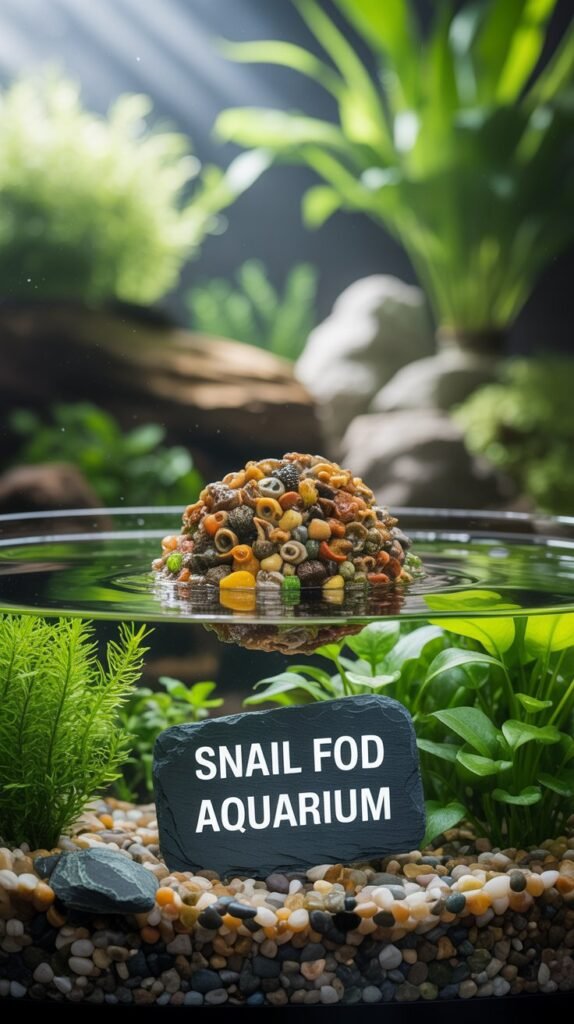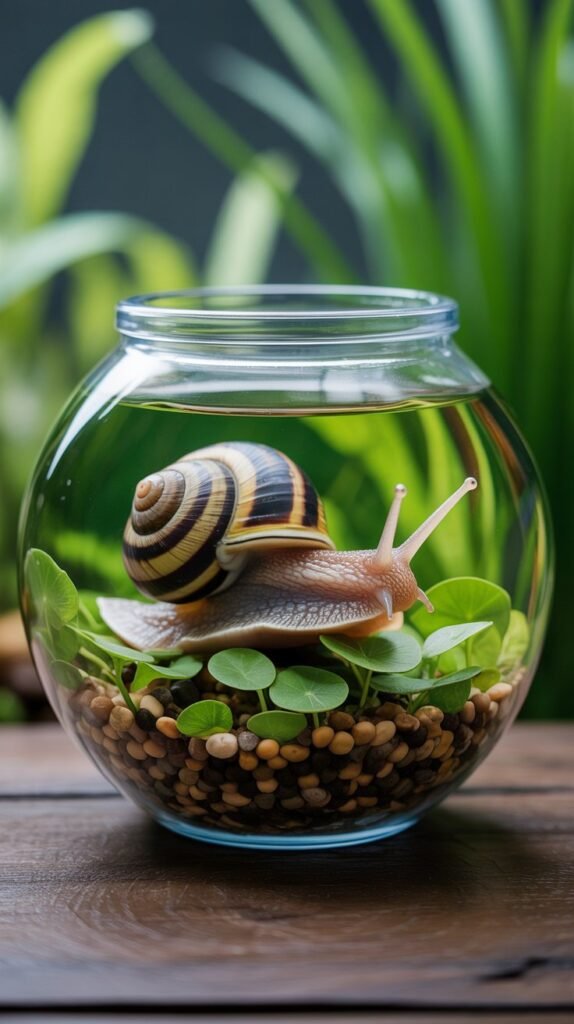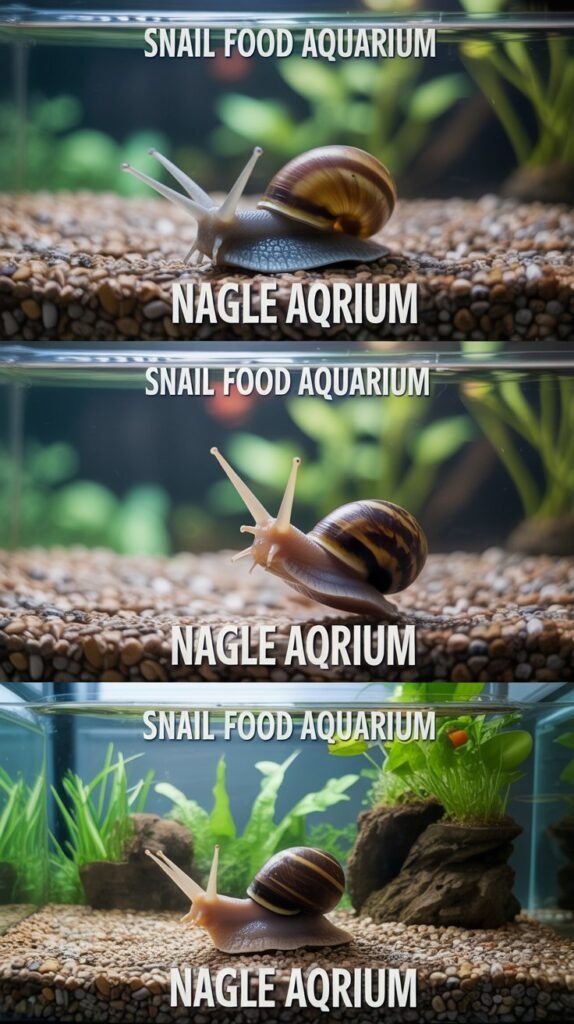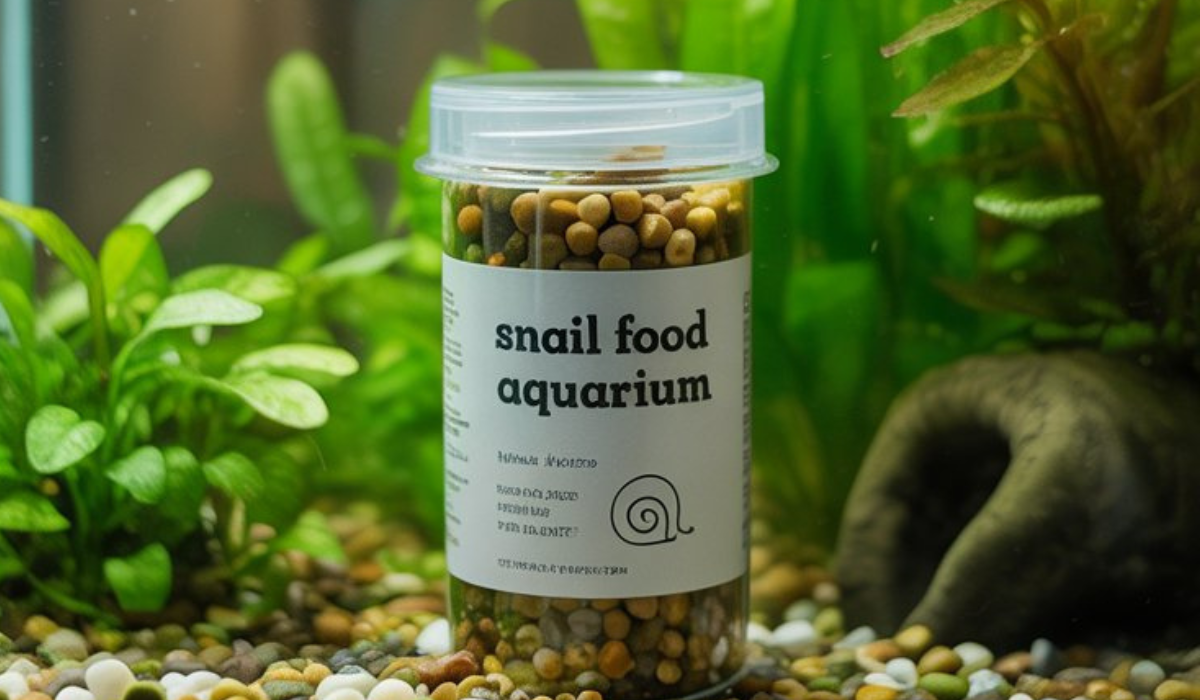Keeping snails in aquariums has become increasingly popular among aquarists. Snails not only add beauty and diversity to aquariums but also play an important role in cleaning up algae, decaying plant matter, and leftover fish food. However, if you want your snails to thrive, you need to understand their dietary requirements. Choosing the right snail food aquarium options ensures they remain healthy, active, and beneficial to your aquatic ecosystem
In this detailed guide, we’ll explore everything you need to know about feeding aquarium snails. We’ll cover natural food sources, store-bought options, homemade recipes, feeding frequency, and even the best practices to avoid overfeeding. Whether you keep mystery snails, nerite snails, ramshorn snails, or Malaysian trumpet snails, this guide will help you keep them happy and healthy
Why Feeding Aquarium Snails Is Important
Many beginners assume that snails can survive only on algae and waste. While it’s true that snails are excellent scavengers, relying solely on natural food sources in your tank is not enough. Different types of snails have different nutritional needs, and neglecting their diet can lead to poor shell health, low activity, and shorter lifespans

A balanced diet ensures snails maintain strong shells, reproduce healthily, and contribute to the ecosystem by controlling algae without becoming pests. Feeding them properly also helps prevent them from eating live plants aggressively, which is often a concern for planted aquarium keepers
What Do Aquarium Snails Eat?
Aquarium snails are opportunistic feeders, meaning they eat a wide variety of foods depending on availability. Their diet can include:
- Algae: Most species, especially nerite and ramshorn snails, love eating algae from tank surfaces
- Vegetables: Blanched zucchini, spinach, cucumber, and lettuce are favorites
- Aquarium plants (decaying leaves): They usually prefer dead or dying plant matter rather than healthy leaves
- Leftover fish food: Snails often consume uneaten pellets, flakes, and frozen food
- Specialized snail food: Commercial options such as sinking pellets, wafers, or calcium-rich blocks
- Protein sources: In small amounts, some species enjoy fish, shrimp pellets, or even boiled egg yolk
The key is variety. A mixed diet provides balanced nutrition and ensures your snails don’t starve or damage live plants unnecessarily
The Role of Calcium in Snail Food
Calcium is one of the most important nutrients for snails. Their shells are made primarily of calcium carbonate, and without enough calcium, snails develop weak, cracked, or eroded shells. To maintain shell health, you should ensure they receive plenty of calcium from both food and water
Ways to provide calcium include:
- Offering cuttlebone in the aquarium
- Feeding calcium-rich vegetables such as kale, spinach, and broccoli
- Using calcium supplements or mineral blocks designed for snails and shrimp
- Maintaining water hardness (GH) at healthy levels
If your snails show white pits, cracks, or thinning shells, it’s a sign they need more calcium in their diet
Best Store-Bought Snail Food for Aquariums
For convenience, many aquarists rely on store-bought snail food. These products are formulated to provide balanced nutrition while enhancing shell growth
- Algae Wafers – Excellent for nerite and mystery snails, they mimic natural algae growth
- Shrimp Pellets – High in protein and minerals, suitable for snails in mixed tanks
- Snail-Specific Calcium Blocks – Dissolve slowly and release nutrients into the water
- Vegetable-Based Sinking Pellets – Provide fiber and plant-based nutrition
- Fish Food Leftovers – While not a primary diet, snails can benefit from shared meals
When choosing store-bought food, look for high-quality ingredients with minimal fillers. Pellets that sink are preferable, as most snails feed at the bottom
Natural Foods for Aquarium Snails

If you prefer a natural feeding approach, you can use common household vegetables and plants. These options are healthy, inexpensive, and easy to prepare
- Zucchini: Slice into thin pieces, blanch, and sink in the tank
- Cucumber: Snails enjoy the soft interior, but remove uneaten parts quickly to avoid fouling the water
- Spinach & Kale: Rich in calcium and vitamins, best when lightly blanched
- Carrots: Provide beta-carotene for vibrant colors, but feed in small amounts
- Pumpkin & Squash: Seasonal treats that snails readily accept
Always blanch vegetables by boiling them briefly and cooling before feeding. This softens the texture, making it easier for snails to eat
Homemade Snail Food Recipes
Some aquarists like to prepare homemade food for their snails to ensure balanced nutrition. Here are two simple recipes:
Recipe 1: Calcium-Rich Veggie Gel Food
- 1 cup of blanched spinach and zucchini
- 1 teaspoon of powdered cuttlebone or calcium supplement
- 1 packet of unflavored gelatin
- Blend the vegetables, mix with gelatin and calcium, then refrigerate until firm. Cut into small cubes before feeding
Recipe 2: Protein-Vegetable Mix
- ½ cup of peas and carrots (blanched)
- 1 tablespoon of fish flakes or shrimp pellets
- 1 teaspoon of spirulina powder
- Blend, mix with gelatin, and store in the fridge. Use small portions to avoid overfeeding
These homemade foods give you control over the ingredients and ensure your snails get both plant matter and essential minerals
How Often Should You Feed Aquarium Snails?
The feeding frequency depends on tank conditions and the number of snails. If your tank is heavily planted or has algae growth, snails may need less supplemental feeding. However, in clean aquariums or bare tanks, they will require more regular meals
General feeding guidelines:
- Feed every 2–3 days if there is natural algae and plant matter available
- Feed daily in tanks with little algae or few plants
- Offer only enough food that can be eaten within 12–24 hours to prevent water quality issues
Overfeeding can cause uneaten food to rot, leading to ammonia spikes and cloudy water
Feeding Different Types of Aquarium Snails

Not all snails have the same dietary habits. Here’s a quick breakdown:
- Mystery Snails – Enjoy vegetables, algae wafers, and pellets. They require extra calcium for their thick shells
- Nerite Snails – Prefer algae but will also eat blanched vegetables and wafers
- Ramshorn Snails – Omnivorous, eating plants, algae, fish food, and vegetables
- Malaysian Trumpet Snails – Feed on detritus and uneaten fish food in the substrate
- Apple Snails – Larger species that require more vegetables and protein
Tailoring your feeding approach to the species helps prevent malnutrition or plant damage
Avoiding Overfeeding and Water Pollution
One of the biggest mistakes aquarists make is overfeeding snails. Since snails are slow eaters, food left too long in the tank can decompose and harm water quality. Here are tips to prevent this:
- Offer small portions and observe how much is eaten
- Remove uneaten vegetables after 24 hours
- Feed at night if you share the tank with fish that might outcompete snails
- Use sinking foods to ensure snails at the bottom get access
Healthy snails will actively move toward food within minutes of introduction. If food remains untouched for long periods, reduce feeding frequency
Benefits of Feeding Snails Properly
Feeding your snails a balanced diet comes with several benefits:
- Stronger, healthier shells
- Longer lifespan and higher activity levels
- Better algae control in aquariums
- Reduced risk of snails damaging live plants
- Improved breeding success in species like ramshorn and mystery snails
Proper nutrition also ensures that snails remain beneficial additions to your aquarium instead of becoming pests
Common Mistakes in Feeding Aquarium Snails
Even experienced aquarists sometimes make errors when feeding snails. Here are some to avoid:
- Relying only on algae – Not enough for long-term health
- Neglecting calcium – Leads to weak, cracked shells
- Overfeeding – Causes water pollution and snail population booms
- Feeding only fish food – Lacks the variety snails need
- Not removing uneaten food – Encourages bacteria and fouling
Avoiding these mistakes helps maintain a clean, balanced aquarium
Best Practices for Feeding Snails in Community Tanks
If you keep snails with fish or shrimp, competition for food can be a challenge. Some tips to ensure snails get their share include:
- Feed after lights out when fish are less active
- Place food in areas accessible only to snails, like under decorations
- Use sinking wafers that reach the substrate quickly
- Spread food across different tank areas to prevent crowding
This way, all inhabitants benefit without stress or competition
Conclusion
Feeding aquarium snails correctly is essential for their health and for maintaining a balanced tank. A varied diet of algae, vegetables, commercial pellets, and calcium sources keeps them thriving. Whether you choose natural foods, store-bought options, or homemade recipes, the key is balance and moderation. By paying attention to your snails’ needs, you can enjoy their beauty and their role as natural cleaners in your aquarium
FAQs About Snail Food in Aquariums
1. Can snails survive only on algae?
Some species, like nerite snails, thrive mainly on algae, but most snails need additional food such as vegetables or pellets for balanced nutrition
2. What vegetables are safe for snails?
Cucumber, zucchini, spinach, kale, and lettuce are safe and nutritious when blanched
3. Do snails eat fish waste?
Snails do not eat fish feces. They may feed on uneaten food and detritus, but fish waste is not a food source
4. How do I provide calcium for my snails?
Use cuttlebone, mineral blocks, or calcium-rich vegetables. Maintaining proper water hardness also helps
5. Can snails eat fish food?
Yes, snails can eat fish flakes, pellets, and shrimp food, but it should not be their only diet
6. How often should I feed my aquarium snails?
Depending on tank conditions, snails should be fed every 2–3 days or daily in tanks with little natural food
7. Will snails eat live plants?
Most snails prefer decaying leaves, but if underfed, some species may nibble on healthy plants
8. Is homemade snail food safe?
Yes, homemade gel foods with vegetables, calcium, and protein are safe and healthy options
9. How do I know if my snails are getting enough food?
Healthy snails will have strong shells, be active, and grow steadily. Weak shells or inactivity may signal poor diet
10. Can overfeeding harm snails?
Yes, uneaten food pollutes the water, leading to stress and potential snail die-off

